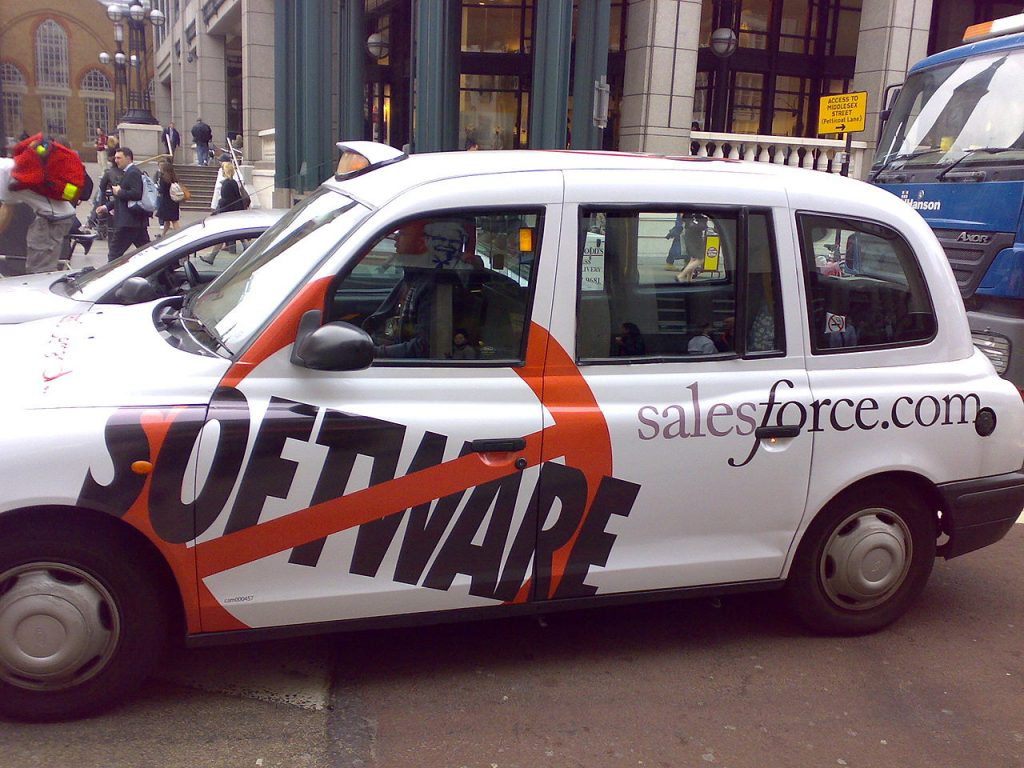The ever-increasing demand for enterprise mobile apps continues to grow at a speedy rate, and with billions of mobile devices already, the end is nowhere in sight. Though studies show that overall growth in this industry has slowed down significantly, that “slowing down” is relevant to the initial “explosive” growth that we witnessed. The fact remains, however, that the mobile revolution has hit the enterprise, and many organizations need intelligent apps now more than ever before. This is largely owed to the effort put in by PaaS providers from around the world to make sure that developers have to use as little code as necessary to build and launch applications. With regards to high-productivity and low-code development environments that are based on PaaS, Gartner announced a new cloud-oriented magic quadrant in May with Salesforce in the lead by a considerable margin.
Excellence through education

Salesforce has put a lot of time and effort into educating their developers and have a number of certification courses that are part of an educational wing called Trailhead. Trailhead has become quite popular and is a great way for both Salesforce developers and administrators to learn to use the growing number of Salesforce features and services. App builders on Salesforce are split into two groups — those who can code and those who can click, and it’s support for the latter that’s got Salesforce leading the magic quadrant. Trailhead is marketed as the fun way to learn Salesforce and has both admin- and beginner-level courses about everything from mobile app development to engaging IoT customers to general customer service in the cloud and even a course in Salesforce Einstein.
Salesforce Einstein is a new tool that brings the power of artificial intelligence to every Salesforce user so they can leverage AI to deliver smarter, more impactful customer experiences. Additionally, customers with little or no coding experience can now build AI-powered apps that get smarter with every interaction, using clicks or code.
Coding without code
If you’re a clicker, Trailhead is a great place to start. The Force.com Developer Certification is a base-level certification that makes sure you know how to use all the declarative (point-and-click) tools on the platform. The point here is that it’s OK if you do not know how to code as long as you know when it’s required and when the declarative functionality is the better option. This basic developer course is further broken down into approximately 50 percent logic and process automation, while the rest is divided almost equally among Salesforce fundamentals, data modeling and management, testing, debugging, and deployment tools.
Up one level you have the advanced developer course, which on completion shows that you know how to do just about everything in code including but not limited to creating Apex triggers, custom Visualforce controllers, integration with external systems using APIs, migrating metadata, and creating unit tests. Now while the basic developer course is just awesome for employees without any coding knowledge, it provides a great foundation for anyone who wants to get into coding, as more that 50 percent of the course is about the logic and fundamentals behind how code is processed and executed. A third-level certification called “Architect” also exists, which on completion basically means you’re ready for the big league.
App Cloud
Salesforce has been around since the 1990s and is considered by many the No.1 SaaS provider. It wasn’t till 2015 that it launched App Cloud, which is an offshoot of its Salesforce 1 Platform. App Cloud consists of several components, one of which is the famous Heroku enterprise that Salesforce paid an astonishing $250 million for. Other components include Force.com and the new CRM platform called Lightning.
Force.com is the PaaS system that simplifies the development and deployment process by letting developers build and deploy applications using core functionalities of Salesforce.com like workflows, business processes, mobile software development kits, and more. Force.com also doubles up as a host and can be used as an alternative to Amazon Web Services, Rackspace, SugarCRM, or other cloud-based platforms.
The Lightning advantage

Education is only part of Salesforce’s unique approach. The next part is the integration with their CRM. Gartner in this report was looking for a PaaS offering that supports application development, deployment, and execution in the cloud and specifically mentioned that Salesforce leads this quadrant because of how well App Cloud is integrated with its CRM applications.
Lightning was announced around the same time as App Cloud and is basically a completely redesigned version of Salesforce’s core CRM product after taking their customers’ suggestions and feedback very seriously. Lightning consists of Lightning Experience, which is the new CRM tool, and Lightning Design System with Lightning Components, which is the tool’s customization engine. It also includes Lightning App Builder, which is supposed to be an even easier way to build applications on top of the Salesforce CRM tool.
Apart from a clear interface designed to work across all screens including the Apple Watch, the new version also sports a navigation bar approach as opposed to the tabbed interface of the previous version. The search button has also been enhanced to make it possible to move to various functions by simply entering keywords.
The Salesforce CRM is easily the most used CRM in the enterprise right now and with the new industry-specific CRM packages, Salesforce is pretty much looking to spread to every corner of every industry in the enterprise.
Good at everything
All in all, this has been a very well-rounded package from Salesforce, and the fact that customer’s comments and suggestions factor in releases definitely goes to show that all priorities are in order. As far as high-productivity and low-code goes, it doesn’t get much more productive than the ability to have anyone who can point and click come on board as a developer and start getting stuff done. This very basic requirement makes it much easier to hire employees based on general aptitude and personality rather than hunting for people with a specific set of skills, which is a HR team’s nightmare.

Salesforce is really going to lengths to put themselves in their customer’s shoes here, and it’s that forward-thinking vision that’s got them in the lead. Salesforce seems to have just about everything a developer could need in terms of enabling event-driven intelligence, workflow automation, predictive action, and personalization. It’s all come at a price, though, and Salesforce hasn’t shied away from paying that price, whether it’s been for expensive additions like Heroku or cutting-edge offerings like Salesforce Einstein.
The end-user experience
Under all the gadgets and gizmos, it’s the keen determination to focus on delighting customers as opposed to releasing features and letting customers figure it out that truly makes the Salesforce app development approach unique. This not only allows for customers to best make use of and appreciate the services provided but also gears them up for future updates and releases at the same time. With this “customer first” approach as opposed to technology for the sake of technology, it’s really no wonder Salesforce is leading the magic quadrant, and the way they’re going that lead is probably going to be growing.
Photo credit: Wikimedia



